


Yu Fujia, assistant general manager of China Road and Bridge Corporation's Kenya operations, is interviewed in Nairobi, Kenya, on May 16, 2025. Constructed by China Road and Bridge Corporation (CRBC), the Nairobi-Malaba Standard Gauge Railway is a key component of the Kenya Standard Gauge Railway Project with a total length of about 960 km upon completion. According to Yu Fujia, assistant general manager of CRBC's Kenya operations, the Nairobi-Malaba railway incorporates 14 ground-level wildlife crossings, 150 underground culverts, and six km of noise-dampening overpasses with light-permeable barriers, forming a three-dimensional corridor for animals. (Xinhua/Li Yahui)
NAIROBI, May 21 (Xinhua) -- As dawn breaks over Kenya's savannah, a herd of giraffes ambles beneath the 7.5-meter-high arches of the Nairobi-Malaba Standard Gauge Railway bridge, purposefully engineered to accommodate their towering frames.
About three km away, infrared cameras capture a mother rhino guiding her calf through a wildlife corridor adorned with Maasai tribal motifs, capturing a fleeting moment of coexistence between steel and wilderness.
These scenes, witnessed by journalists traveling across Kenya to mark the International Day for Biological Diversity in May, embody a philosophy underpinning China's infrastructure push in Africa: ecological preservation is not a constraint but the very blueprint for progress.
Constructed by China Road and Bridge Corporation (CRBC), the Nairobi-Malaba Standard Gauge Railway is a key component of the Kenya Standard Gauge Railway Project with a total length of about 960 km upon completion. According to Yu Fujia, assistant general manager of CRBC's Kenya operations, the Nairobi-Malaba railway incorporates 14 ground-level wildlife crossings, 150 underground culverts, and six km of noise-dampening overpasses with light-permeable barriers, forming a three-dimensional corridor for animals.
"Wildlife tourism fuels Kenya's economy. We could not afford to disrupt that," said Yu. When the original rail route threatened to bisect wildebeest migration paths, engineers rerouted 15 km of track southward, adding nine bridges and 12 percent to the cost, to protect the movement of over two million animals.
CRBC's approach combines ancient Chinese ecological wisdom with modern technology. Near Tsavo National Park, in the southeastern part of the country, vibration alert systems emit subterranean pulses that mimic natural tremors, gently steering elephant herds away from the tracks.
Hippo habitats are safeguarded by corrugated, noise-reducing rails engineered to register just 55 decibels, even quieter than the whisper of savannah winds.
In a striking act of biomimicry, wetland bridge piers in Mombasa are textured with artificial coral reefs that have since nurtured thriving mangrove ecosystems.
"Every decision prioritized minimal intrusion," Yu emphasized. Nighttime construction bans in ecologically sensitive zones, dust-suppressing water trucks, and low-vibration machinery became standard protocol. Even abandoned quarries were repurposed into watering holes for wildlife after construction ended.
Beyond engineering, CRBC is nurturing a culture of environmental stewardship across local communities. Its "Ecological Bank" initiative mandates the planting of five native trees for every one displaced, a program that has already regenerated 230 hectares of forest.
Partnering with Maasai guides, the company developed an app that alerts 37 nomadic tribes to construction zones. Meanwhile, 1,200 local residents have been trained to patrol and protect mangrove reserves.
Along the railway, solar-powered drip irrigation systems double as animal drinking stations and have increased pasture yields by 40 percent.
"They did not just build a railway; they wove an ecological safety net," said Erustus Kanga, director general of the Kenya Wildlife Service.
As freight trains glide past grazing giraffes and cheetah cubs peer from culverts at Chinese-built guardrails, Kenya's SGR stands as a United Nations-certified model of sustainable infrastructure.
"The Chinese showed us development is not about conquering nature, but finding its rhythm," said Millicent Kathambi, warden of Nairobi National Park.
In this unlikely harmony of steel and savannah, a resonant lesson emerges: when civilizations learn to listen to the land, progress becomes not a force of disruption, but of balance and renewal. ■

Millicent Kathambi, warden of Nairobi National Park, speaks during an interview in Nairobi National Park, Kenya, on May 16, 2025. Constructed by China Road and Bridge Corporation (CRBC), the Nairobi-Malaba Standard Gauge Railway is a key component of the Kenya Standard Gauge Railway Project with a total length of about 960 km upon completion. According to Yu Fujia, assistant general manager of CRBC's Kenya operations, the Nairobi-Malaba railway incorporates 14 ground-level wildlife crossings, 150 underground culverts, and six km of noise-dampening overpasses with light-permeable barriers, forming a three-dimensional corridor for animals. (Xinhua/Li Yahui)
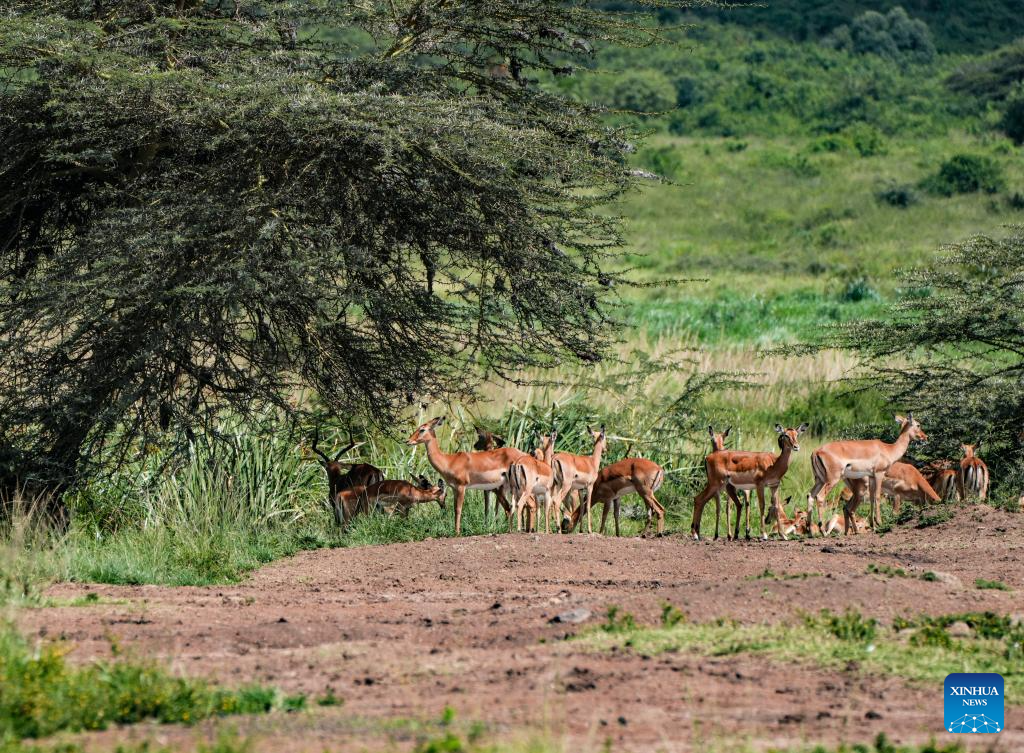
Antelopes are seen in Nairobi National Park, Kenya, on May 16, 2025. Constructed by China Road and Bridge Corporation (CRBC), the Nairobi-Malaba Standard Gauge Railway is a key component of the Kenya Standard Gauge Railway Project with a total length of about 960 km upon completion. According to Yu Fujia, assistant general manager of CRBC's Kenya operations, the Nairobi-Malaba railway incorporates 14 ground-level wildlife crossings, 150 underground culverts, and six km of noise-dampening overpasses with light-permeable barriers, forming a three-dimensional corridor for animals. (Xinhua/Li Yahui)
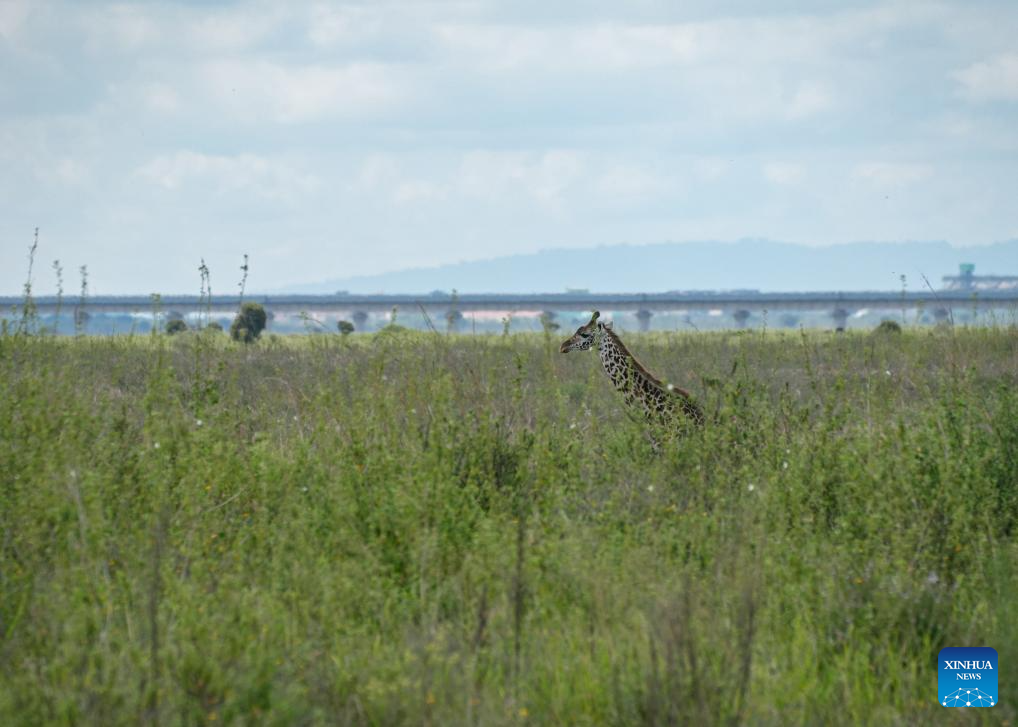
A giraffe is pictured with a viaduct of the Nairobi-Malaba Standard Gauge Railway in the background in Nairobi National Park, Kenya, on May 16, 2025. Constructed by China Road and Bridge Corporation (CRBC), the Nairobi-Malaba Standard Gauge Railway is a key component of the Kenya Standard Gauge Railway Project with a total length of about 960 km upon completion. According to Yu Fujia, assistant general manager of CRBC's Kenya operations, the Nairobi-Malaba railway incorporates 14 ground-level wildlife crossings, 150 underground culverts, and six km of noise-dampening overpasses with light-permeable barriers, forming a three-dimensional corridor for animals. (Xinhua/Li Yahui)
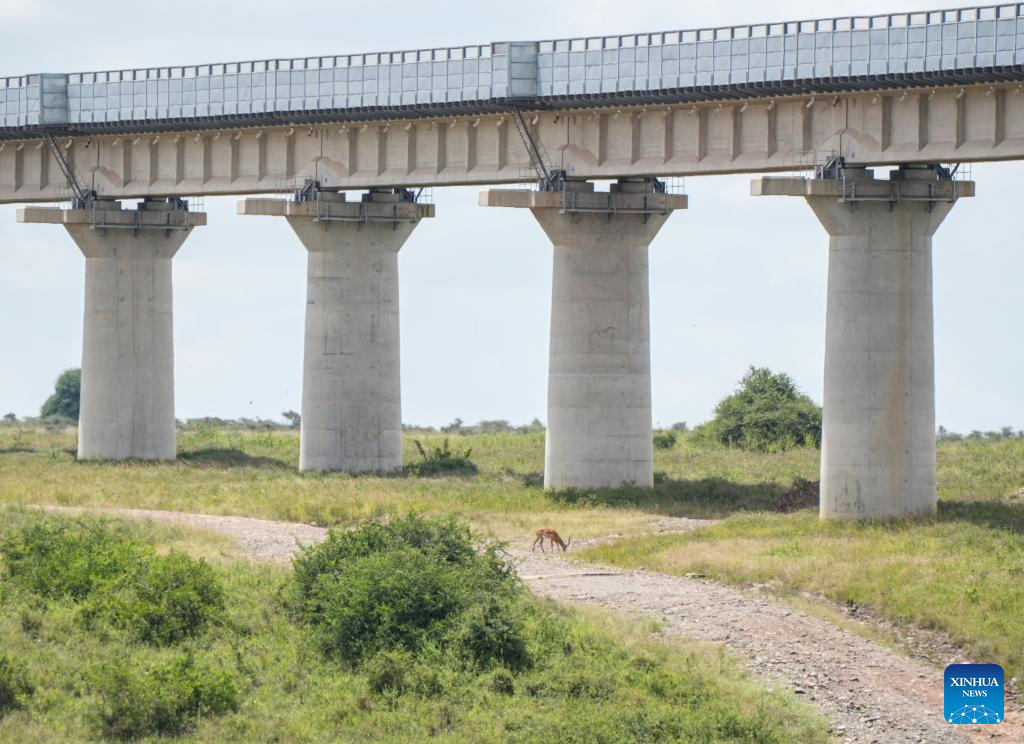
An antelope grazes under a viaduct of the Nairobi-Malaba Standard Gauge Railway in Nairobi National Park, Kenya, on May 16, 2025. Constructed by China Road and Bridge Corporation (CRBC), the Nairobi-Malaba Standard Gauge Railway is a key component of the Kenya Standard Gauge Railway Project with a total length of about 960 km upon completion. According to Yu Fujia, assistant general manager of CRBC's Kenya operations, the Nairobi-Malaba railway incorporates 14 ground-level wildlife crossings, 150 underground culverts, and six km of noise-dampening overpasses with light-permeable barriers, forming a three-dimensional corridor for animals. (Xinhua/Li Yahui)
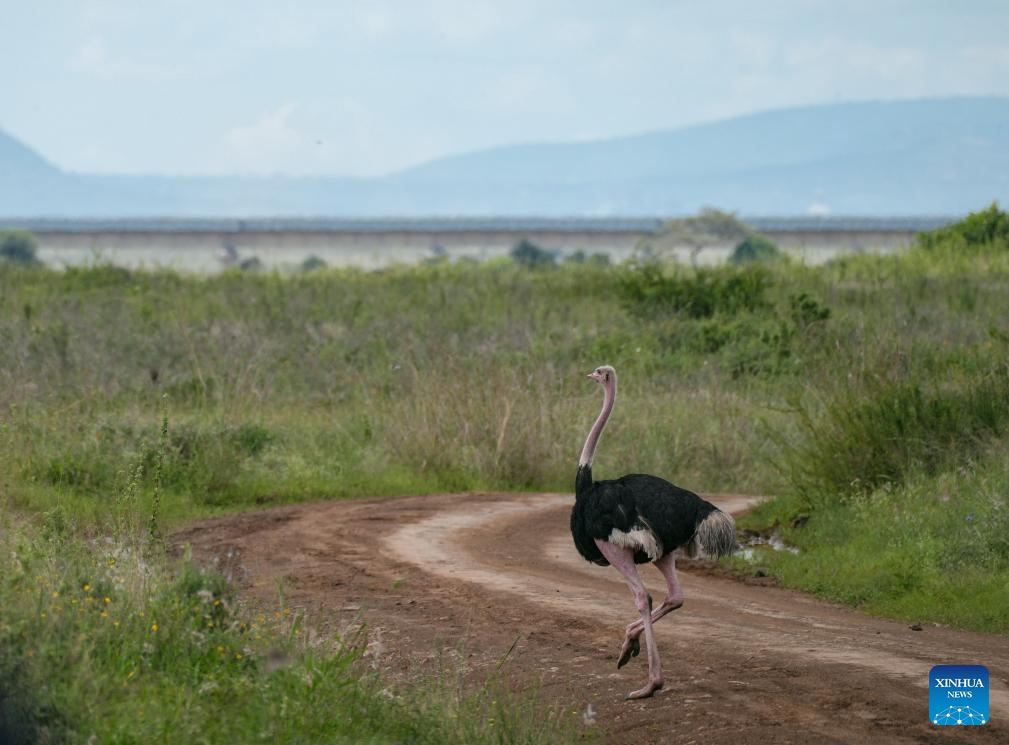
An ostrich is pictured with a viaduct of the Nairobi-Malaba Standard Gauge Railway in the background in Nairobi National Park, Kenya, on May 16, 2025. Constructed by China Road and Bridge Corporation (CRBC), the Nairobi-Malaba Standard Gauge Railway is a key component of the Kenya Standard Gauge Railway Project with a total length of about 960 km upon completion. According to Yu Fujia, assistant general manager of CRBC's Kenya operations, the Nairobi-Malaba railway incorporates 14 ground-level wildlife crossings, 150 underground culverts, and six km of noise-dampening overpasses with light-permeable barriers, forming a three-dimensional corridor for animals. (Xinhua/Li Yahui)
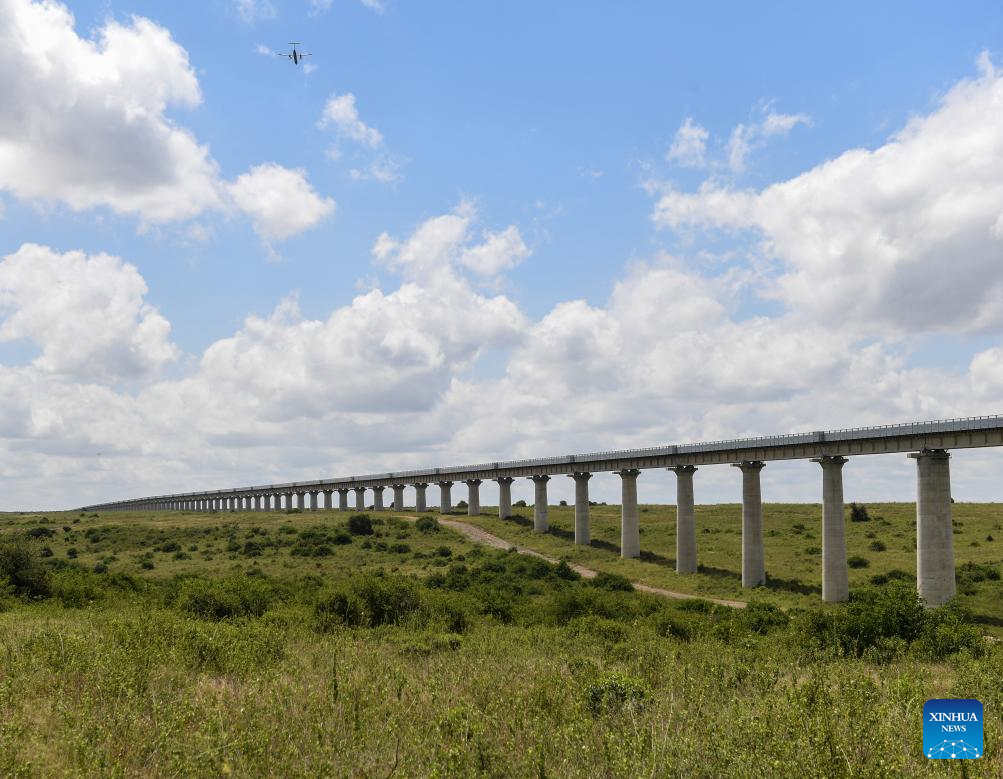
Photo taken on May 16, 2025 shows a viaduct of the Nairobi-Malaba Standard Gauge Railway traversing Nairobi National Park in Kenya. Constructed by China Road and Bridge Corporation (CRBC), the Nairobi-Malaba Standard Gauge Railway is a key component of the Kenya Standard Gauge Railway Project with a total length of about 960 km upon completion. According to Yu Fujia, assistant general manager of CRBC's Kenya operations, the Nairobi-Malaba railway incorporates 14 ground-level wildlife crossings, 150 underground culverts, and six km of noise-dampening overpasses with light-permeable barriers, forming a three-dimensional corridor for animals. (Xinhua/Li Yahui)
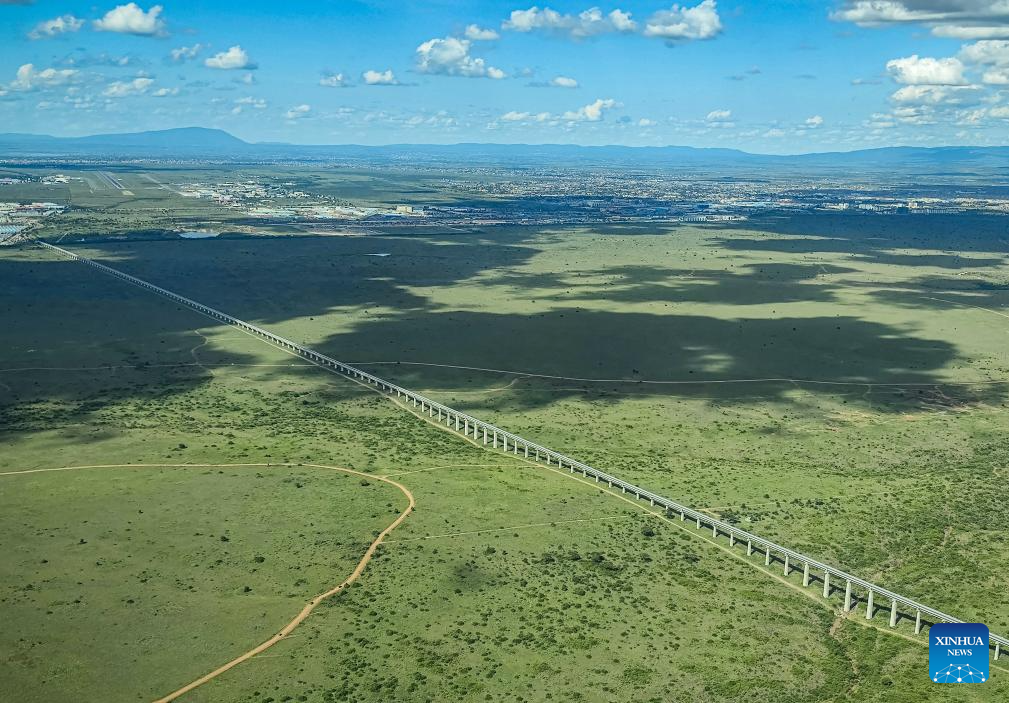
Photo taken with a smartphone on April 27, 2025 shows a viaduct of the Nairobi-Malaba Standard Gauge Railway traversing Nairobi National Park in Kenya. Constructed by China Road and Bridge Corporation (CRBC), the Nairobi-Malaba Standard Gauge Railway is a key component of the Kenya Standard Gauge Railway Project with a total length of about 960 km upon completion. According to Yu Fujia, assistant general manager of CRBC's Kenya operations, the Nairobi-Malaba railway incorporates 14 ground-level wildlife crossings, 150 underground culverts, and six km of noise-dampening overpasses with light-permeable barriers, forming a three-dimensional corridor for animals. (Xinhua/Li Yahui)
点击右上角![]() 微信好友
微信好友
 朋友圈
朋友圈

请使用浏览器分享功能进行分享
